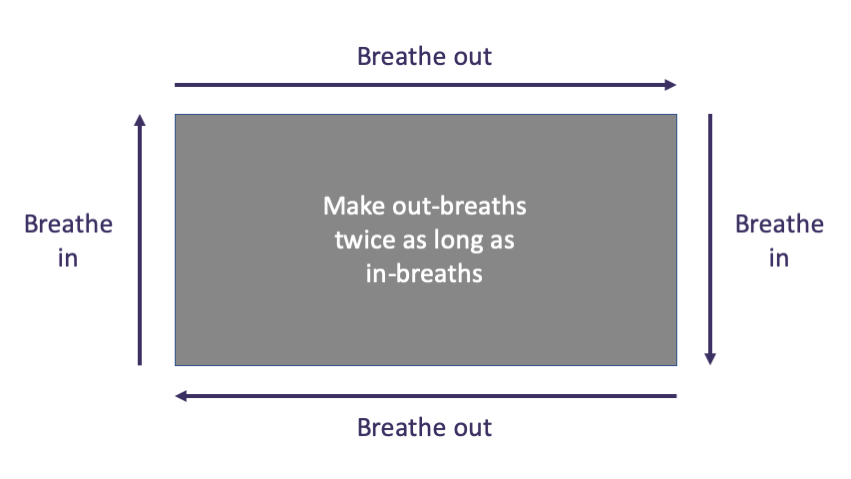
Three ways to calm yourself
Sometimes we can find ourselves in situations that stress us or where our thoughts and feelings run away with us. In these situations we can find anger or panic taking control of us and we’re unable to stop them. If this happens to you here are three things you can do to calm yourself.
Remove yourself from the situation
The first thing you can consider is removing yourself from the situation. Once you’re away from it, calmness can return naturally. In situations involving other people where it may feel awkward or difficult to leave altogether, taking a trip to the bathroom may be enough to enable you to calm yourself.
Take control of your breathing
Whenever you’re aroused, for instance if you’re affected by stress, anger, or panic, stress hormones start to circulate in your body. Your heart beats faster and you tend to breathe in a rapid, shallow way that’s unhelpful and can limit the amount of oxygen your body receives. This is the so-called “fight or flight” response that primes our bodies for action. It evolved a long time ago to protect us from threats, This is a natural, automatic bodily response, but in modern societies we face many threats that are emotional or psychological rather than physical. Priming our bodies for physical action isn’t usually helpful in these situations. Learning and practicing rectangular breathingenables you to take control of your breathing, reduce your fight or flight response, and calm yourself. Rectangular breathing makes sure your lungs are filled with air on each breath, giving you plenty of oxygen. This tends to reduce your heart rate and the amount of stress hormones circulating, and leads to you feeling calmer.
To do it, take a deep breath in and feel your chest expand as your lungs fill. Then breathe out, taking around twice as long as your intake breath. It can help to visualise a rectangle with the long sides twice as long as the short sides, and trace a path around it as you breathe in and out. If possible, sit down in a comfortable chair and close your eyes while you’re doing rectangular breathing.

Keep on breathing like this until you feel calmer. Don’t give up if it hasn’t worked after the first few breaths, it can take a few minutes to work so keep going until it does.
Grounding
Grounding is aimed at turning your attention away from whatever has made you stressed, angry, or panicked. It focusses your attention onto a specific aspect of the present moment. You can do grounding anywhere, anytime.
Here are some grounding exercises to try:
If you’re somewhere where it’s not easy to use your senses in these ways (for instance, if you’re in bed in the dark) there are other ways of grounding yourself by imagining or remembering being somewhere: